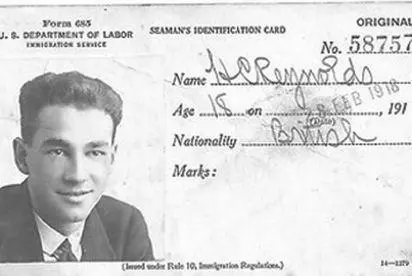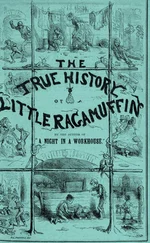Kerry Greenwood - Tamam Shud
Здесь есть возможность читать онлайн «Kerry Greenwood - Tamam Shud» весь текст электронной книги совершенно бесплатно (целиком полную версию без сокращений). В некоторых случаях можно слушать аудио, скачать через торрент в формате fb2 и присутствует краткое содержание. Город: Sydney, Год выпуска: 2012, ISBN: 2012, Издательство: NewSouth, Жанр: Детектив, Прочая документальная литература, на английском языке. Описание произведения, (предисловие) а так же отзывы посетителей доступны на портале библиотеки ЛибКат.
- Название:Tamam Shud
- Автор:
- Издательство:NewSouth
- Жанр:
- Год:2012
- Город:Sydney
- ISBN:978-1-742-23350-5
- Рейтинг книги:3 / 5. Голосов: 1
-
Избранное:Добавить в избранное
- Отзывы:
-
Ваша оценка:
- 60
- 1
- 2
- 3
- 4
- 5
Tamam Shud: краткое содержание, описание и аннотация
Предлагаем к чтению аннотацию, описание, краткое содержание или предисловие (зависит от того, что написал сам автор книги «Tamam Shud»). Если вы не нашли необходимую информацию о книге — напишите в комментариях, мы постараемся отыскать её.
Tamam Shud — читать онлайн бесплатно полную книгу (весь текст) целиком
Ниже представлен текст книги, разбитый по страницам. Система сохранения места последней прочитанной страницы, позволяет с удобством читать онлайн бесплатно книгу «Tamam Shud», без необходимости каждый раз заново искать на чём Вы остановились. Поставьте закладку, и сможете в любой момент перейти на страницу, на которой закончили чтение.
Интервал:
Закладка:
Gerald Feltus, who as we know interviewed Teresa for his book on the Tamam Shud case, was sure that she knew the identity of Somerton Man but that doesn’t necessarily prove that he was her lover. While it is true that Teresa Powell gave a Rubaiyat to a drinking companion in Sydney, I am recapping here, I am not convinced that this links her to Somerton Man. After all, there is no naughty little verse in the front of Somerton Man’s first edition and no inscription from Jestyn, just her phone number in the back of the book, scribbled there perhaps because he had nothing else to write on. (There is no notebook, either in his pockets or his luggage). I do believe he came to Somerton Beach to see Teresa but I don’t think he was her lover. He left his suitcase at Central Station. He wasn’t expecting to stay. If someone comes up with some DNA from the hair caught in that plaster cast, I’d bet a good dinner at my favourite restaurant Attica that the DNA tests would prove that Somerton Man was related to Teresa Powell but not the father of her son.
Like my father, I have always been a cautious gambler and, like him, I never bet my bus money, which means I am tolerably certain about this bet. But if I am wrong, I get another dinner at Attica, so there is, as my nephew says, no actual downside. In any case, there is no way of proving or disproving this theory at present. Professor Abbott’s request for the exhumation of Somerton Man in October 2011 was refused by the Attorney-General, who said that there was no public interest (this phrase has a precise legal meaning) in such an exhumation which ‘went beyond curiosity’. Besides, the chance that Somerton Man and Teresa’s son are not in some way related is estimated at one in 20 million – although that’s the sort of chance that wins lotteries, so it does happen.
Meanwhile, as well as analysing the ears of Somerton Man, Professor Henneberg also examined the photograph of a man called HC Reynolds and found Reynolds’s ears and other facial markers to be the same as the man found dead on Somerton Beach. Henneberg goes so far as to say that ‘Together with the similarity of the ear characteristics, this mole, in a forensic case, would allow me to make a rare statement positively identifying the Somerton Man’. So who is HC Reynolds? The photo in question comes from an old ID card, issued in 1918 by the American authorities and later given to Gerald Feltus by a person he describes only as ‘Ruth Collins, an Adelaide woman’. On the ID card HC Reynolds is identified as British and eighteen years old at the time – the right age for Somerton Man, who was estimated in 1948 to be in his late forties or early fifties.

ID cards were issued to sailors who wanted to go ashore in American ports and didn’t have passports. Passports are a relatively recent invention and not every sailor had one, especially in that era. Extensive searches through various English and Australian archives have failed to find anyone by the name of HC Reynolds who was born, as he must have been, in 1900. One researcher, who is convinced that the ID card was issued to a shipwreck survivor, is still checking survivor lists. It is possible that the researchers haven’t consulted the right database yet but it is also possible that Reynolds wasn’t his real name. Identity is not an absolute. One of Australia’s more famous heroes was an English deserter who was actually called Kirkpatrick but enlisted in the army under the name of Simpson. (He and his donkey later attracted some notice.)
In 1900, birth registrations were patchy. Any genealogical researcher – and there is an army of them out there, combing through all the records in search of their great grandfathers – can tell you that sometimes you need to check baptismal registers and family records, not only to pin down the date of a birth but to establish whether it happened at all.
Adoptions in the old days were frequently informal. The big difference between any country, then and now, is that there was a surplus of children then. Before reliable contraception, many women had, perforce, far more children than they could feed, so some of those children went to orphanages and children’s homes and sisters and aunts. Children born out of wedlock were often not even registered, if they were born at home, and some of them were quietly done away with. The writer and historian Lucy Sussex reports that her grandmother found a tiny skeleton buried in a vicarage garden and buried it again, saying with compassion that it must have been ‘a servant’s child’ and that it was best to ‘let sleeping dogs lie’. In short, even if our HC Reynolds is definitely not on the official record, at least under that name, there might be many reasons for it.
Somerton Man continues to attract speculation. There is an article in the 1994 Criminal Law Journal by that excellent judge and historian, John Harber Phillips, who gives a nice little summary of the case and decides that Somerton Man died of digitalis poisoning, despite the previous forensic objections to this idea. My sister believes that the story of Somerton Man is a love story and she might be right. Others have suggested that the piece of paper in his fob pocket saying ‘Tamam Shud’ is a love token rather than a code. We are also told that Stephen King’s novel The Colorado Kid is based on the case of Somerton Man. It is the story of a man found dead on a beach with no identification and the newspaper reporters who try to solve the mystery. I do not usually admire King but I am an avid watcher of Haven , the TV series derived from The Colorado Kid , and the book itself is an interesting meditation on the nature of apprenticeship, experience and learning.
However, it is not about Somerton Man, according to Stephen King himself, who says in his introduction to the 2005 edition that the book was, in fact, inspired by the case of a woman found dead on the shore in Maine. King reports that a fan sent him a clipping, which he has since lost, about a young woman with a bright red purse, who was seen walking on the beach one day, found dead on it the next and remained unidentified for a long time. King loves the strangeness of Maine and in his introduction he says, ‘In this case I’m not really interested in the solution, but in the mystery’.
The same could be said of all of us who have puzzled over the mystery of Somerton Man. ‘Wanting,’ says King ‘is better than knowing.’ And he may be right.
In her 2010 article ‘The Somerton Man: an unsolved history’, Ruth Balint, a senior lecturer in the School of History and Philosophy at the University of New South Wales, goes to considerable lengths to understand her subject. For instance, she is conducted around Adelaide by Gerry Feltus, the detective who published his own book on Somerton Man in the same year, visiting various places that are important to Somerton Man’s story, like the station and Somerton Beach. There are theories that point to the Somerton Man being a displaced person, which do make sense considering the time and place.
After the ruin of Europe, thousands of people flooded into the less destroyed parts of the world. Nazis tended to go to Argentina, for example. On the other hand, my old and distinguished friend Dennis Pryor came to Australia from England as a ten-pound tourist and never wanted his money back. Australia was seen as a fresh start, innocent of the dreadful animosities of old Europe.
Читать дальшеИнтервал:
Закладка:
Похожие книги на «Tamam Shud»
Представляем Вашему вниманию похожие книги на «Tamam Shud» списком для выбора. Мы отобрали схожую по названию и смыслу литературу в надежде предоставить читателям больше вариантов отыскать новые, интересные, ещё непрочитанные произведения.
Обсуждение, отзывы о книге «Tamam Shud» и просто собственные мнения читателей. Оставьте ваши комментарии, напишите, что Вы думаете о произведении, его смысле или главных героях. Укажите что конкретно понравилось, а что нет, и почему Вы так считаете.












